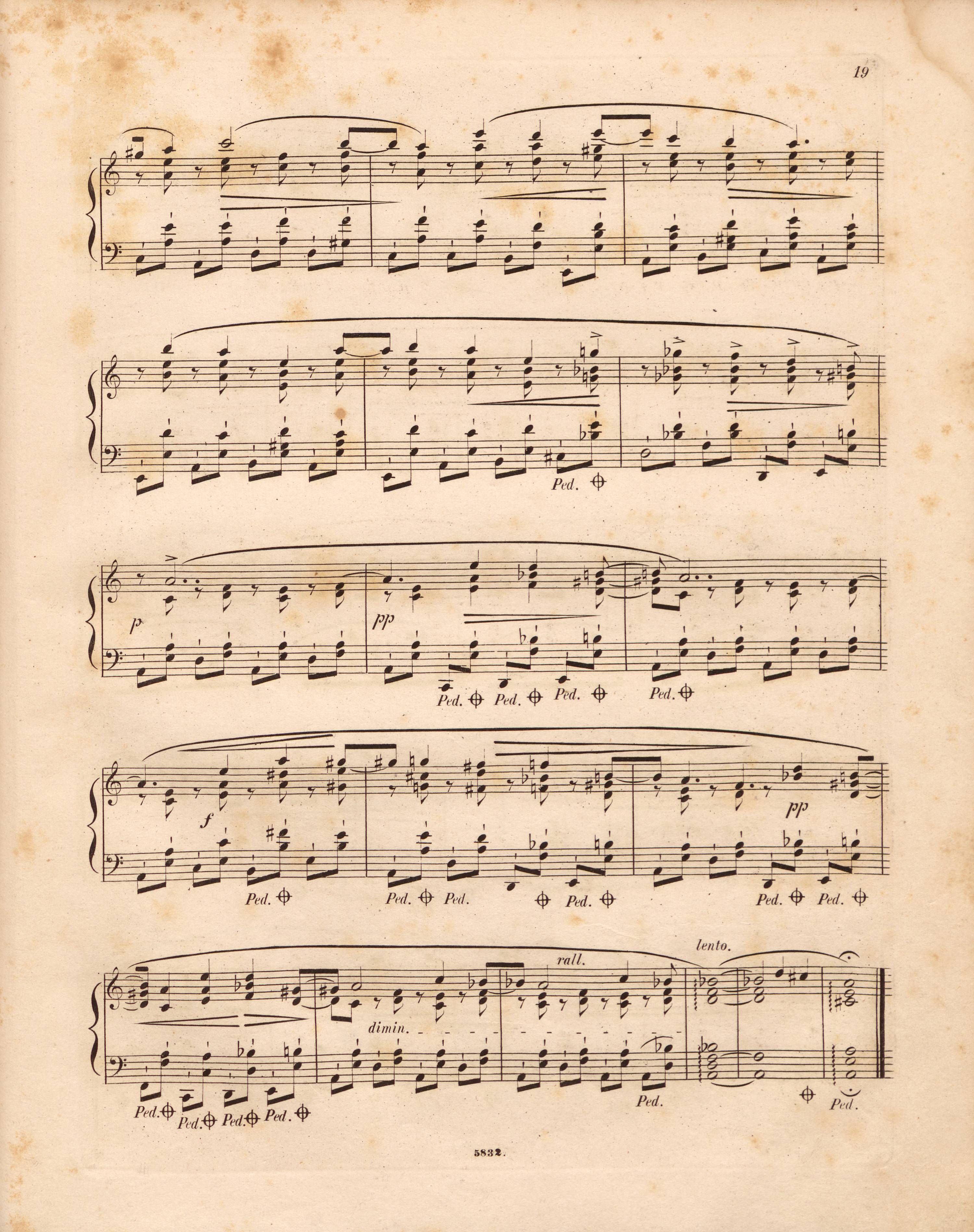



There is a number of arguments justifying the fact that the seemingly erroneous notation of A (→FE,FC→GE1) and EE could have been intended by Chopin, in spite of the fact that in all remaining similar situations he used in this Etude more complicated notation compatible with the rules:
- In this and next bar Chopin writes in A quaver rests at different pitch depending on the fact whether they concern the entire rhythmic structure or the bottom voice only. Placing the rest at the beginning of bar 53 at a lower position suggests then sustention of the melodic note from the previous quaver.
- The first two chords in bar 53, in which all elements are certainly only quavers, were written by Chopin homophonically, without separating the melodic note. In the discussed last chord in bar 52, the melodic note is separated from the accompanying third, which would be an unnecessary complication, if it were to be a quaver.
- All signs of accents (in bars 52-54) over the notes longer than quavers are slightly longer than the signs over quavers.
-
We encounter rhythmic values exceeding the bar in a few different pieces by Chopin, e.g., in the Concerto in F minor, Op. 21, 1st mov., bars 278-279, 3rd mov., bars 423-424, the Polonaise in C
 minor, Op. 26 No. 1, bars 22-27 or the Prelude in D
minor, Op. 26 No. 1, bars 22-27 or the Prelude in D major, Op. 28 No. 15, bars 19-20. In all these cases, simplicity and intuitive legibility of the notation was more important for Chopin than school rules of rhythmic orthography.
major, Op. 28 No. 15, bars 19-20. In all these cases, simplicity and intuitive legibility of the notation was more important for Chopin than school rules of rhythmic orthography.
The above argumentation cannot be considered for conclusive – one cannot exclude an erroneous oversight of the quaver flag (cf. bar 15), while the observed details of the graphic image of the notation can be accidental.
Compare the passage in the sources »
category imprint: Interpretations within context; Differences between sources
issues: GE revisions, Rhythmic errors, Errors of A
notation: Rhythm



